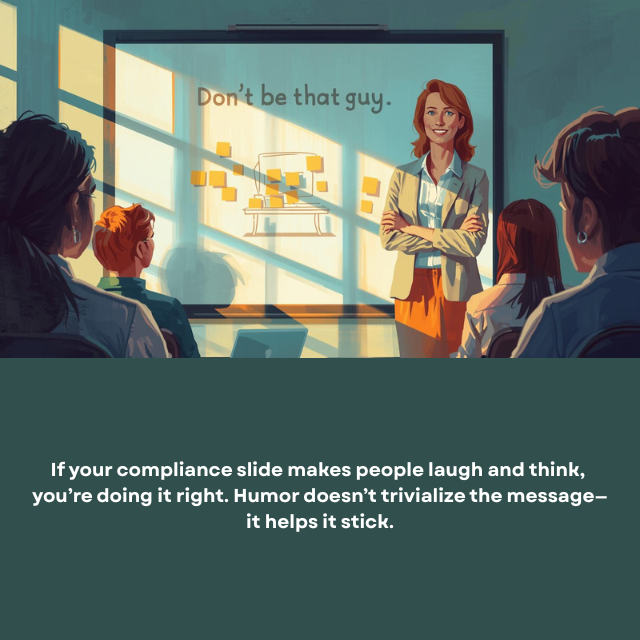- +1 (267) 368-7090
- contact@matcgroup.com
-
53 Knightsbridge Rd,
STE 216
Piscataway, NJ 08854.
We get it. The words “compliance training” rarely spark joy.
For many employees, it conjures up visions of outdated slide decks, monotone narrators (“Bueller? Bueller?”), and multiple-choice questions written by someone who’s never actually met a human. The experience is often so mind-numbing it becomes an exercise in endurance rather than learning.
But here’s the truth: compliance training doesn’t have to be boring.
In fact, when done well, it can be informative, engaging, even memorable.
And that matters. Because whether you’re covering data privacy, workplace conduct, safety protocols, or anti-harassment policies, compliance isn’t just a checkbox. It’s your organization’s reputation, your employees’ safety, and your legal footing.
So how do we turn the driest topics into impactful training? Let’s break it down.
Most people don’t care about Section 5.2.3(b) of the Code of Regulatory Redundancy. But they do care about:
Tip: Ground compliance content in real scenarios your employees might face. Use storytelling, examples, or branching case studies to make it relevant.
If people see themselves in the training, they’ll pay attention. If they don’t, well… good luck with your quiz completion rates.

The fastest way to lose learners? Talk at them for 45 minutes.
The better way? Build interactive content that keeps people involved:
Bonus points if your narrator sounds more like a human and less like a dial tone with a JD.
Not everyone needs the same compliance training. What your facilities team needs to know about hazard communication differs from what your marketing team needs to know about GDPR.
You’ll not only improve retention, you’ll earn employee goodwill by not forcing them to sit through 20 minutes of “this doesn’t apply to me.”

No, we’re not suggesting you turn anti-harassment training into a stand-up routine. But adding a little levity, especially around universally boring elements like password complexity, can break the monotony and keep people engaged.
A slide that says, “Don’t write your password on a sticky note unless you want your desk to star in the next data breach investigation” will stick better than, “Passwords should be kept confidential.”
Used wisely, humor builds connection, lowers resistance, and humanizes compliance training.
“Completed” doesn’t mean understood, and understood doesn’t mean applied. Go beyond checkboxes with:
Compliance isn’t just about what people know. It’s about what they do when it matters.

And it’s an expensive one. Employees tune out. Mistakes happen. Liability increases. And your carefully crafted policies might as well be written on a napkin in invisible ink.
But when compliance training is relevant, interactive, and even a little fun, people engage. They remember. They apply it.
So yes, compliance training can be engaging. If you build it right, it can even be something your employees thank you for. (Okay, maybe not, but at least not pretend their Wi-Fi dropped mid-module.)
Why Safety Training Must Speak Every Employee’s Language
Training, Protocols, Leadership: What Separates Catastrophe from Control